The Tate Britain, located on Millbank in central London, is an art museum renowned for its extensive collection of British Art spanning over five centuries. Among its vast treasures lies the world’s most extensive collection of works by the acclaimed British painter, JMW Turner. This collection is a testament to the artist’s influence on the art world and his significant contributions to British landscape painting.
The origins of Tate Britain go back to 1897 when Sir Henry Tate, a philanthropist and sugar magnate, donated his collection of British Art to the nation. This generous gift served as the foundation for the gallery’s establishment. Originally known as the National Gallery of British Art, it underwent a name change in 1932 and became the Tate Gallery. In 2000, the institution was renamed Tate Britain to differentiate it from its sister gallery, Tate Modern.
The gallery building itself was designed by Sidney R. J. Smith in the Neoclassical style, featuring grand halls, elegant colonnades, and a central rotunda. The striking façade and interior design of Tate Britain complements the artworks it houses.
JMW Turner
Joseph Mallord William Turner (1775-1851) is widely regarded as one of Britain’s greatest painters. His unique style and groundbreaking techniques revolutionized landscape painting, earning him the title “the painter of light.” Turner’s ability to capture the ephemeral qualities of light, atmosphere, and nature set him apart from his contemporaries.
Throughout his career, Turner produced extensive work covering seascapes, landscapes, historical events, and architectural studies. His paintings often demonstrate his fascination with the power of light. He employed vibrant colours and expressive brushwork to evoke emotion and create a sense of drama. The collection covers various stages of Turner’s career, from his early years to later, more experimental works.
JMW Turner 1755-1851
“Dido and Aeneas”
An exquisite oil painting on canvas completed in 1814, this masterpiece showcases Turner’s talent and his ability to capture powerful emotions within a single frame. The size of the large painting (height: 237.2 cm – 93.3 in ; width: 146 cm – 57.4 in) reflects Turner’s status in 1814. By this stage, he was well-established and could focus on creating grand public statements. Depicting a scene from Virgil’s epic poem “The Aeneid,” the painting explores the tragic love story between Queen Dido of Carthage and the Trojan hero Aeneas.
In the bottom right of the painting (in blue and pale red), Turner’s portrays the lovers of Dido (Queen of Carthage and Aeneas. The visually stunning composition merges history, mythology, and romance elements. The artist employed his signature luminous light and atmospheric effects technique to create a vivid and evocative scene.
The background of the painting features a panoramic view of Carthage. The use of warm tones and the play of light and shadow create a sense of depth and dimensionality, enhancing the overall atmosphere of the painting. Symbolism plays a significant role in “Dido and Aeneas.” The flame that flickers at the centre of the painting represents the waning love between the two protagonists. When “Dido and Aeneas” was exhibited in 1814, it garnered significant attention and critical acclaim.
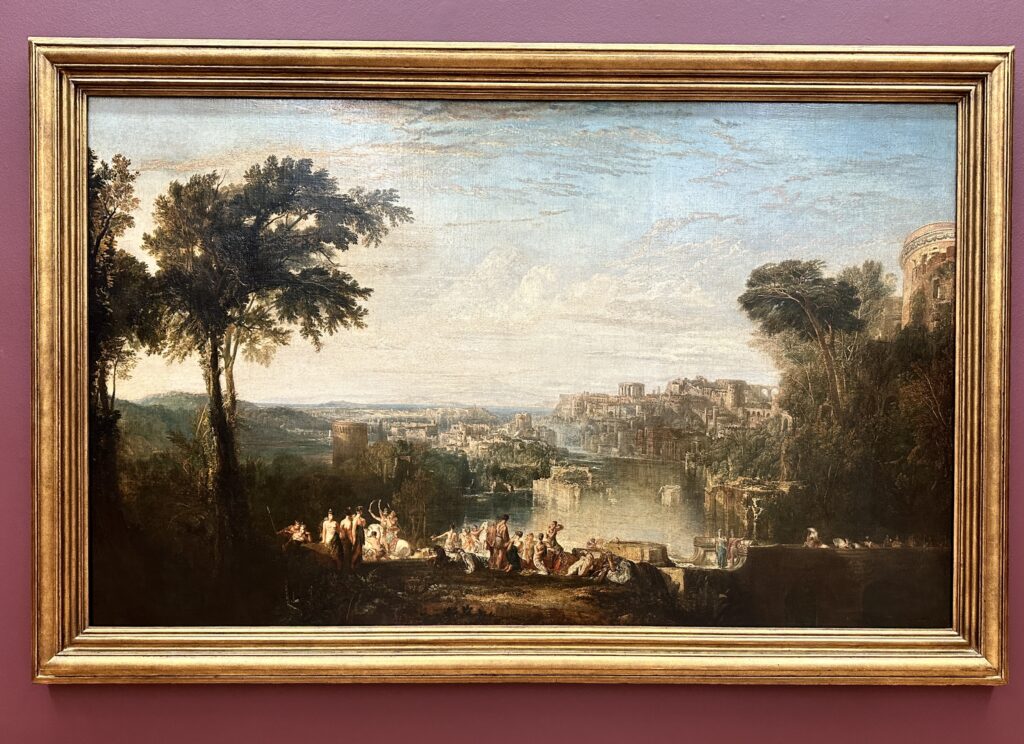
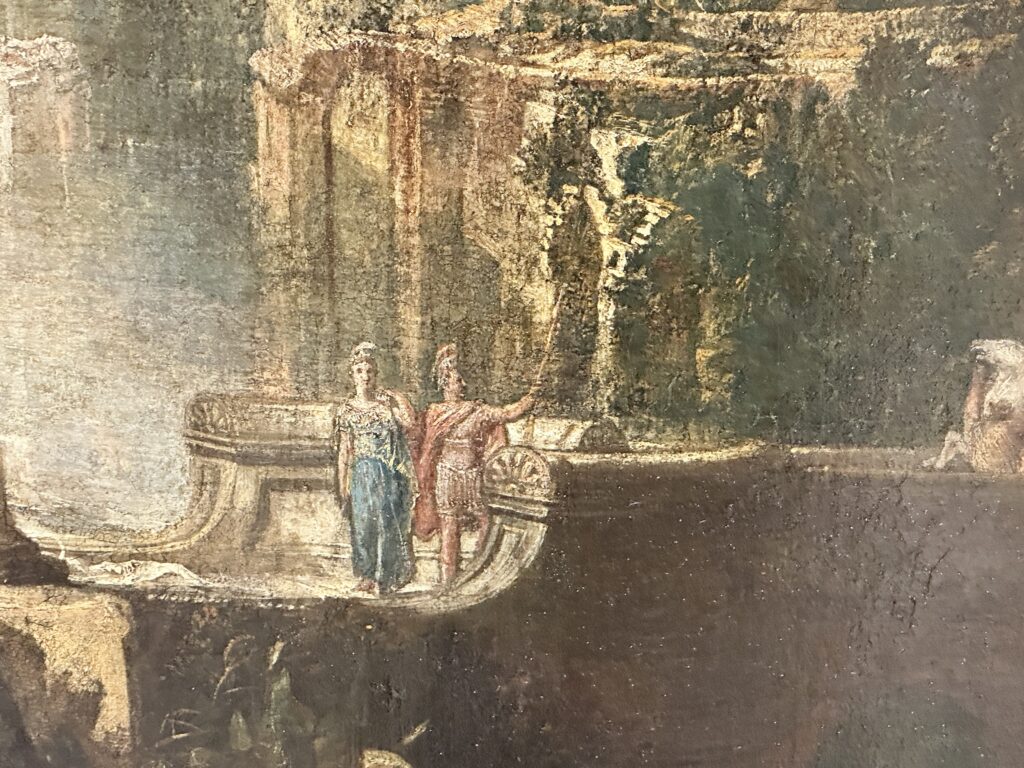
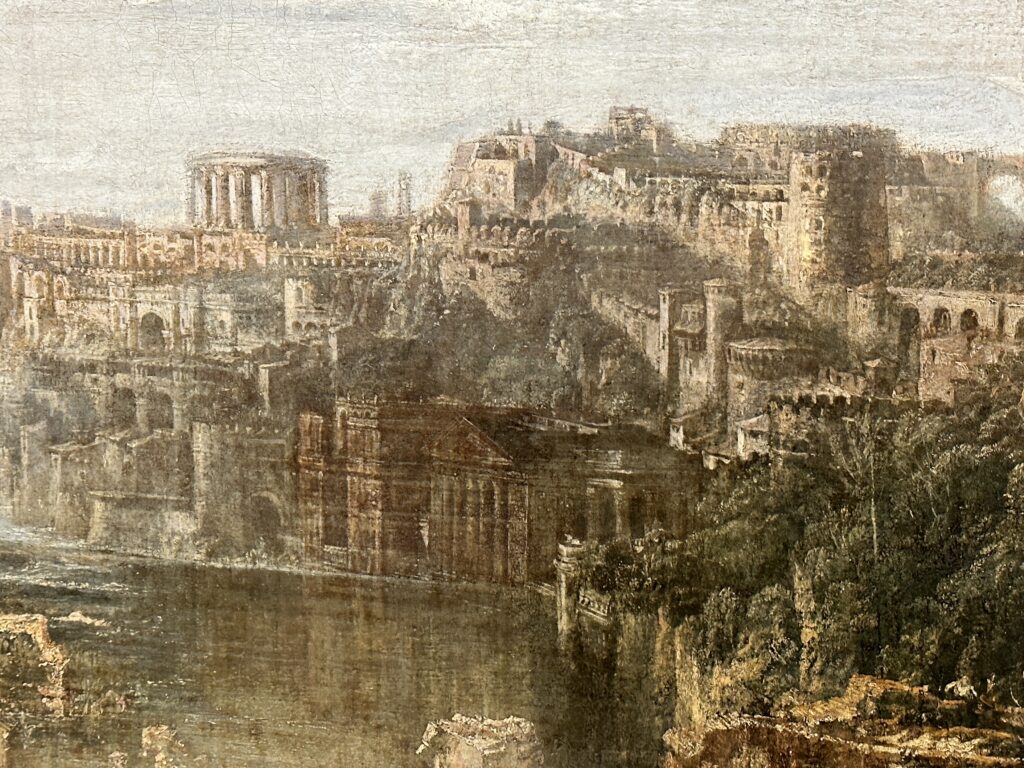
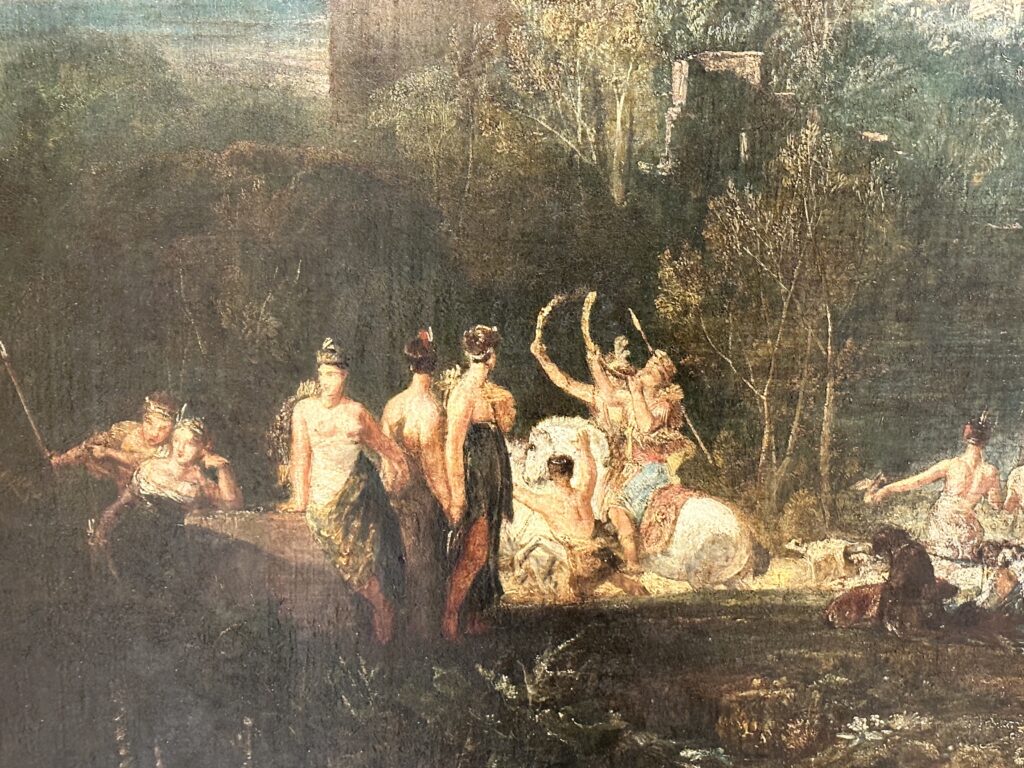
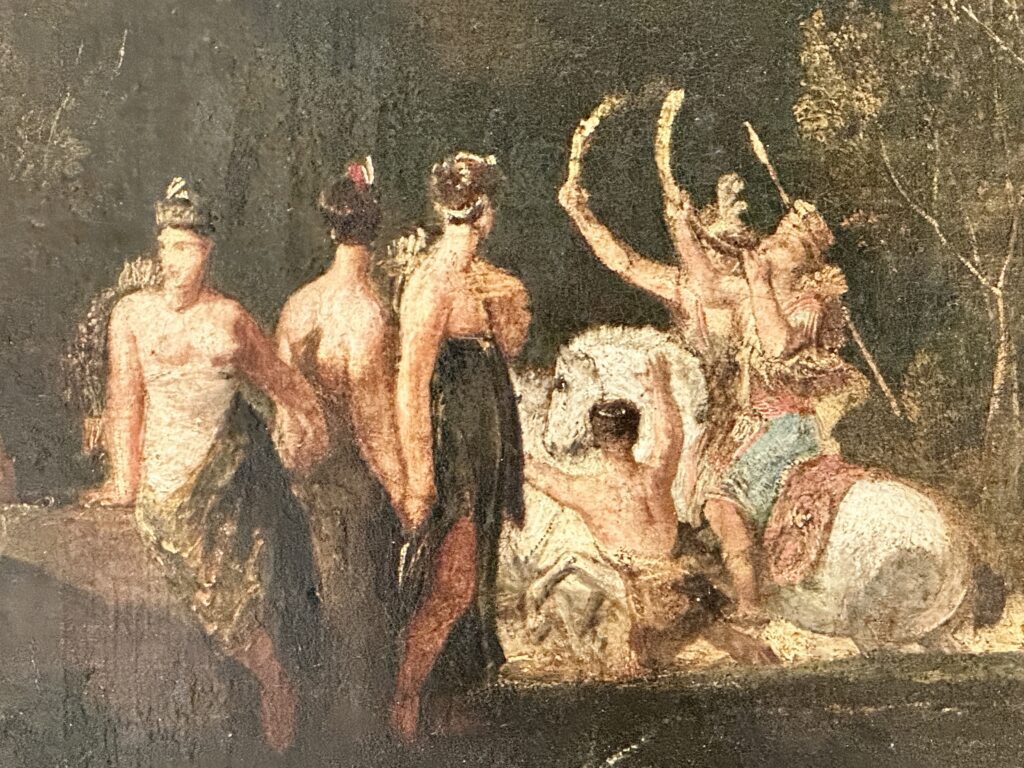
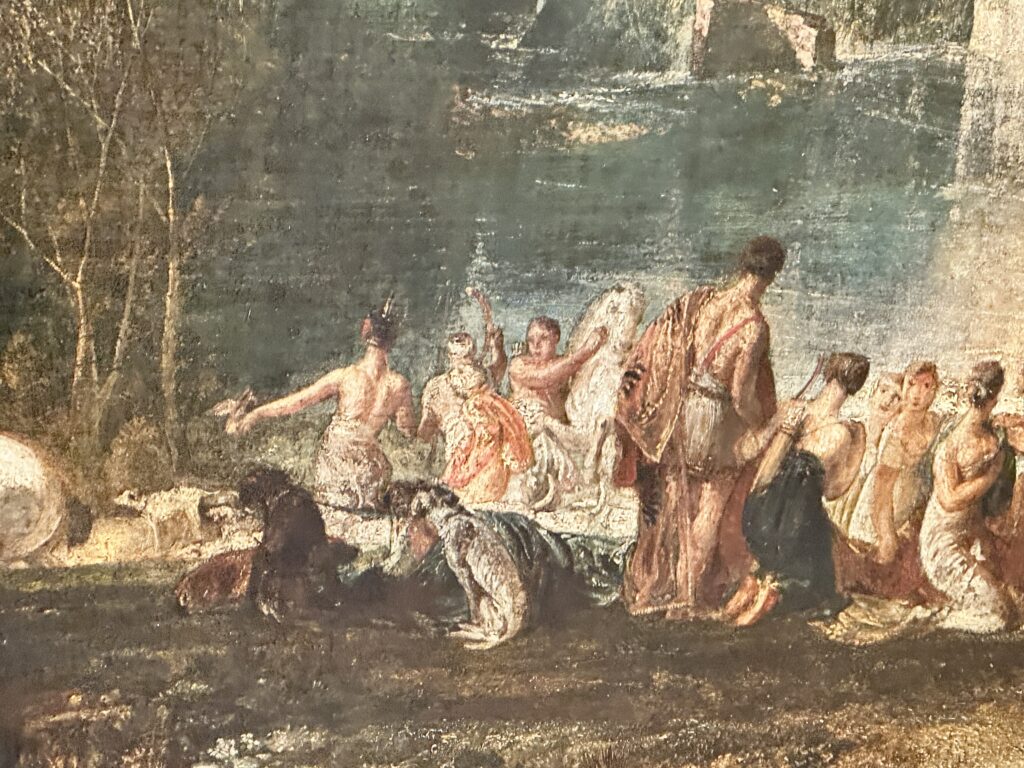
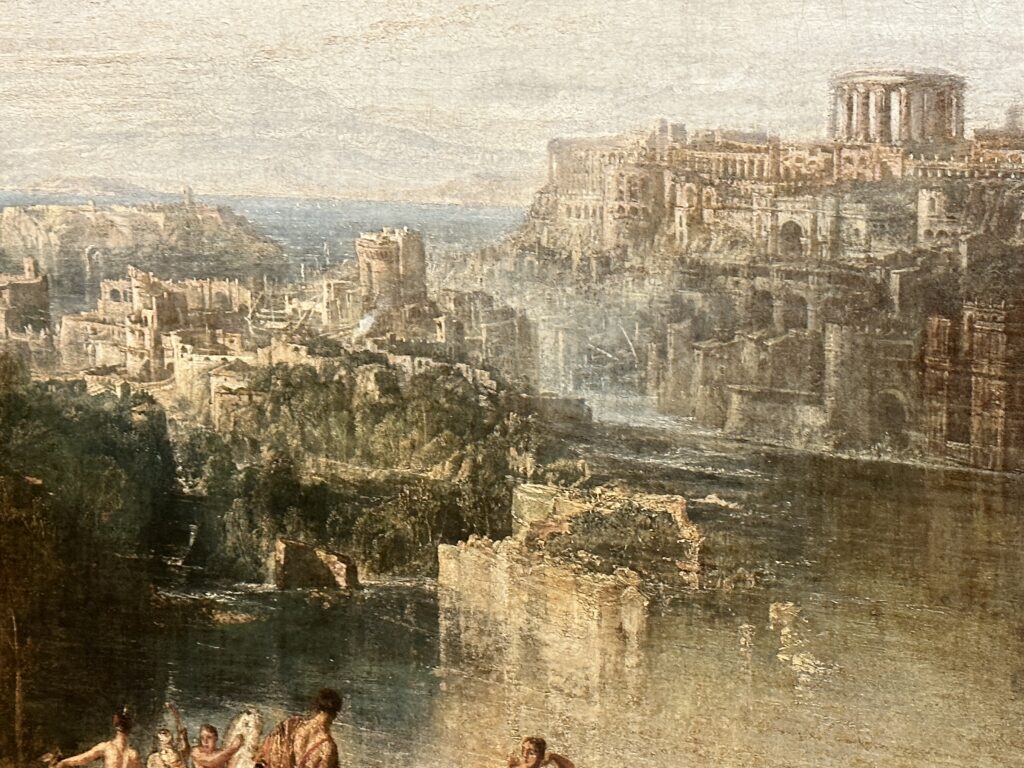
JMW Turner 1755-1851
Childe Harold’s Pilgrimage – Italy
exhibited 1832
Oil paint on canvas
The fact that this painting was exhibited at the Royal Academy in 1832 and garnered such significant attention speaks to Turner’s reputation and popularity during his time. His works were known to evoke powerful emotions and transport viewers into the awe-inspiring realms of nature. The quote from a critic describing the painting as “one of the noblest landscapes” showcases the high regard in which Turner was held.
The title of this painting refers to Lord Byron’s long, epic poem Childe Harold’s Pilgrimage. ‘Childe’ is an ancient title for the son of a nobleman. Turner showed his painting with these lines from Byron’s poem:
… and now, fair Italy!
Thou are the garden of the world…
Thy wreck a glory, and thy ruin graced
With an immaculate charm which cannot be defaced.
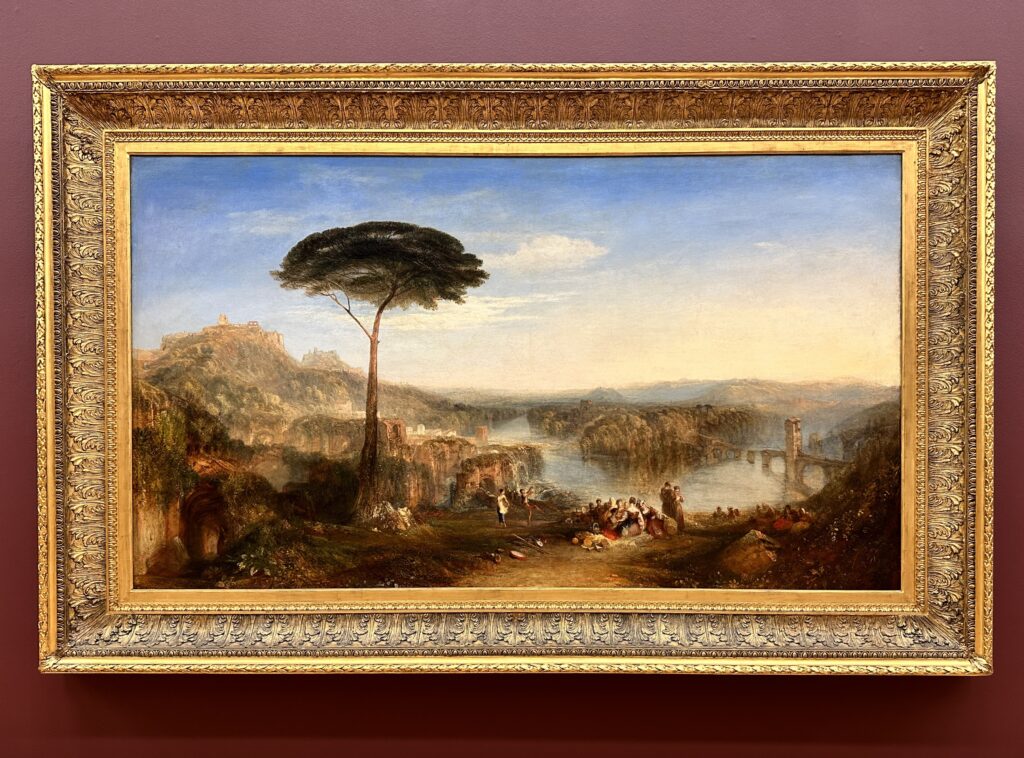
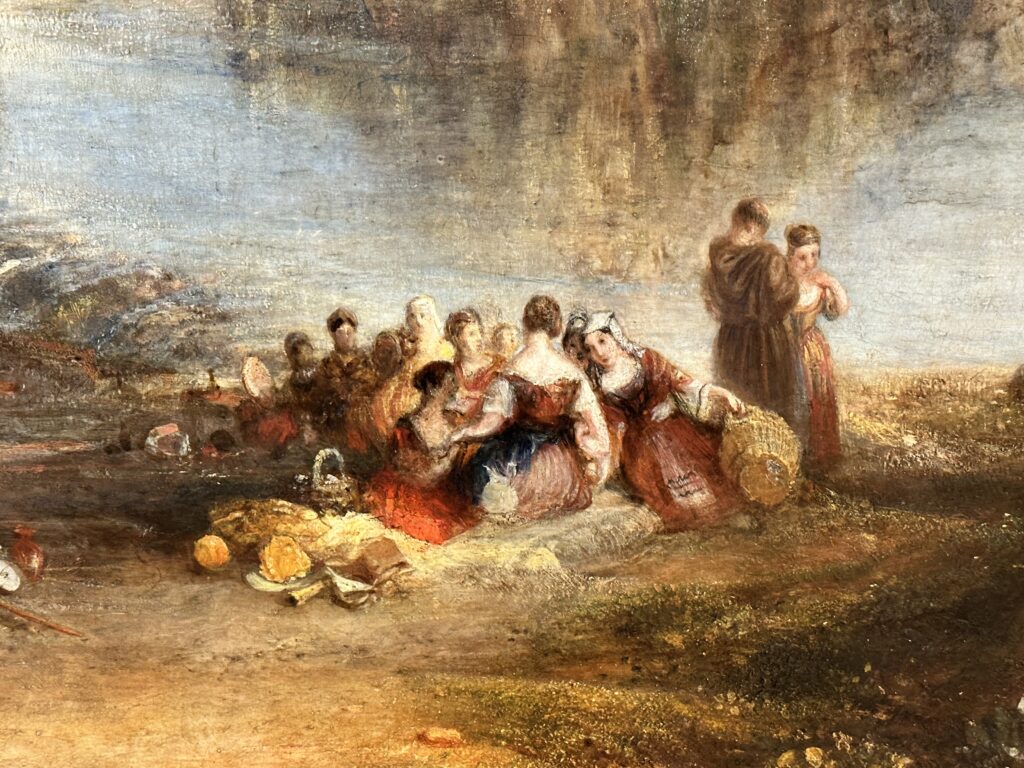
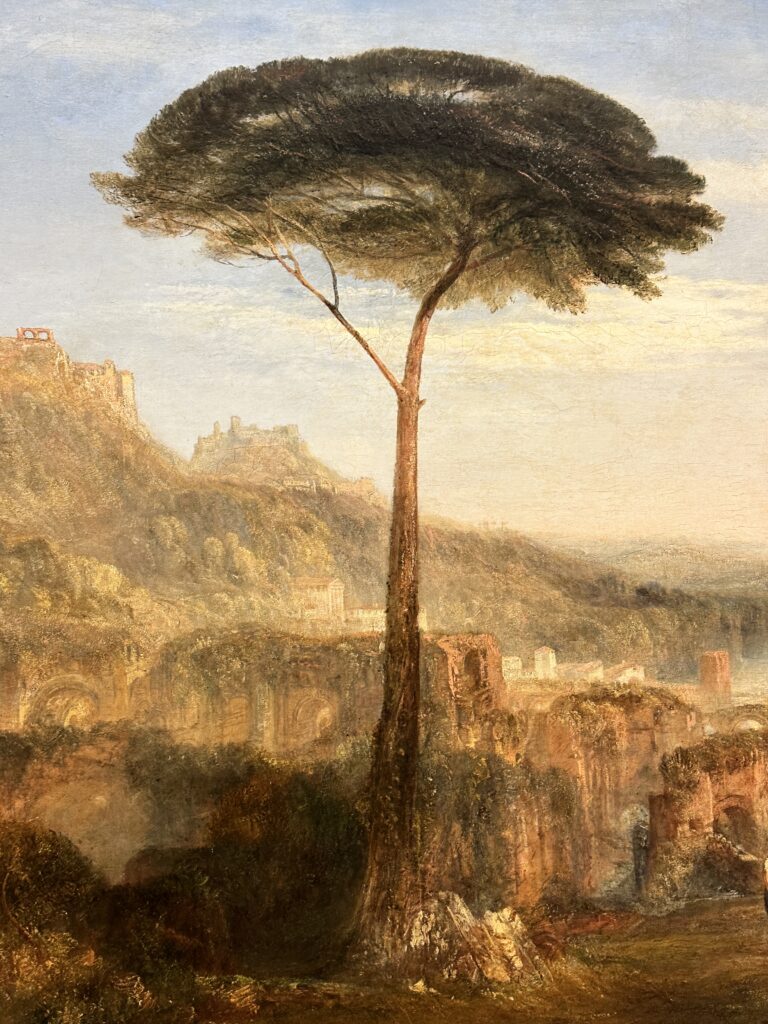

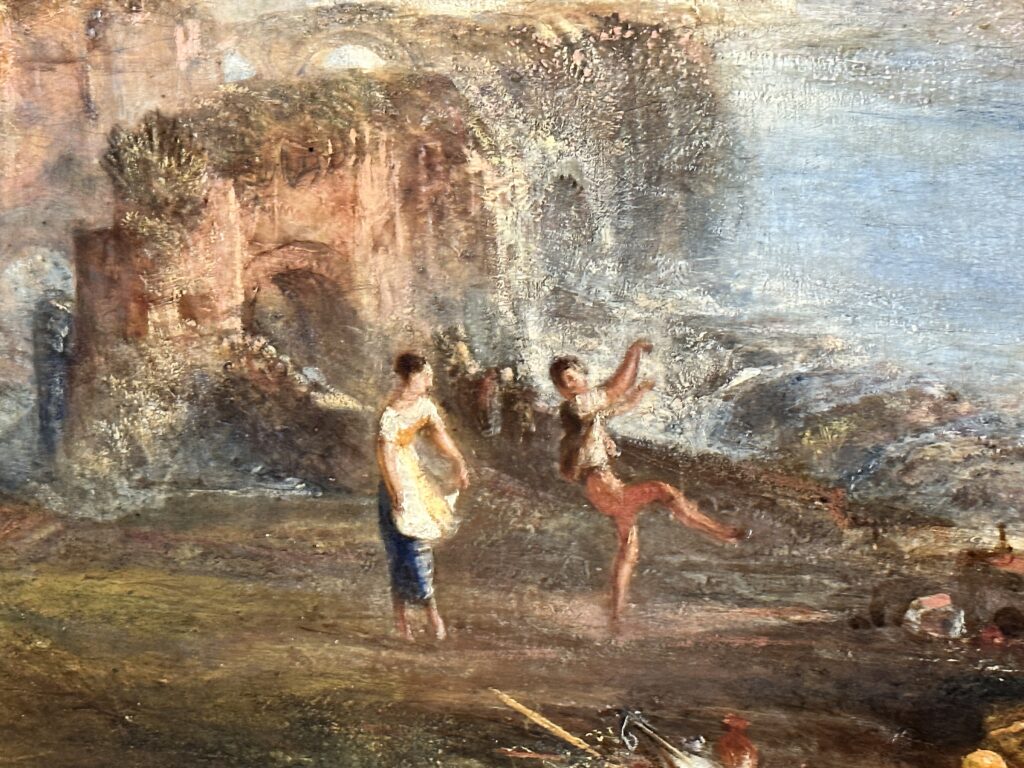
JMW Turner 1755-1851
Caligula’s Palace and Bridge
exhibited 1831
Oil paint on canvas
The painting depicts the ambitious and extravagant project undertaken by the Roman Emperor Caligula during his reign from 37 to 41 AD. Caligula, known for his eccentricity, ordered the construction of a colossal floating bridge across the Bay of Baiae near Naples, Italy. However Turner’s painting portrays a crumbling, overgrown stone bridge, deviating from the grandeur and opulence one might expect. This departure from the historical reality is deliberate and serves as a commentary on the tumultuous times in which Turner lived.
Displayed in the wake of a wave of revolutions that swept through Europe. Turner’s painting and accompanying poetry spoke of ruined hopes. It reflected the artist’s own perception of political upheaval, social change, and dashed aspirations. The crumbling bridge can be interpreted as a metaphor for the failed ambitions of those in power, mirroring the crumbling of established systems during this transformative era.
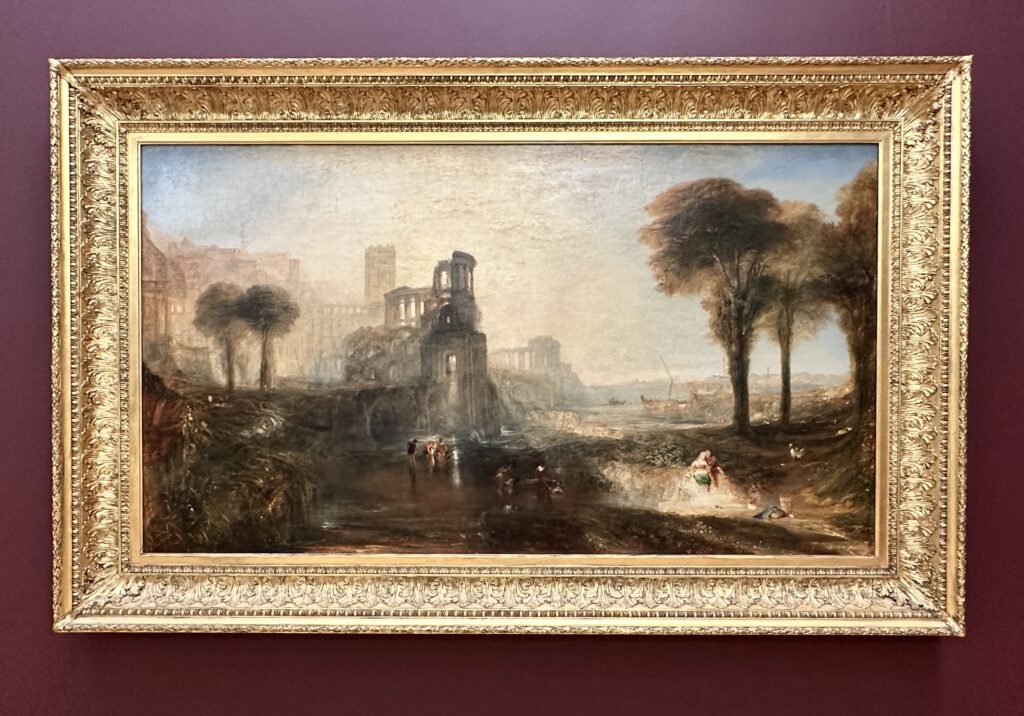
JMW Turner 1755-1851
Ancent Rome, Agrippina Landing with the Ashes of Germanicus
exhibited 1839
Oil paint on canvas
Turner draws on his observations of Rome and his imagination to depict the city in acient times. Rising from the mist it appears as a glowing mass of buildings that melts into the distance. Turner overlays this dreamlike cityscape with a story about love and devotion from acent Italy. Agrippina was married to Roman General, Germanicus. When he was killed. Agrippina carried his ashes back to Roam in an urn. She was meet on her journey by crowds of mourners.
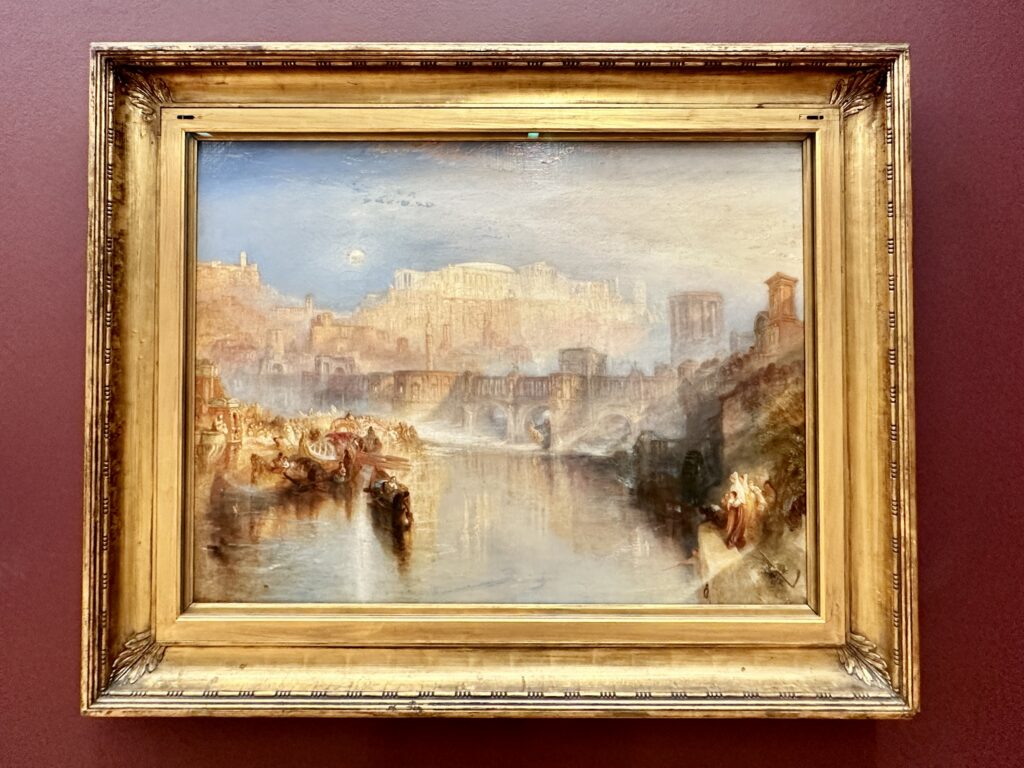
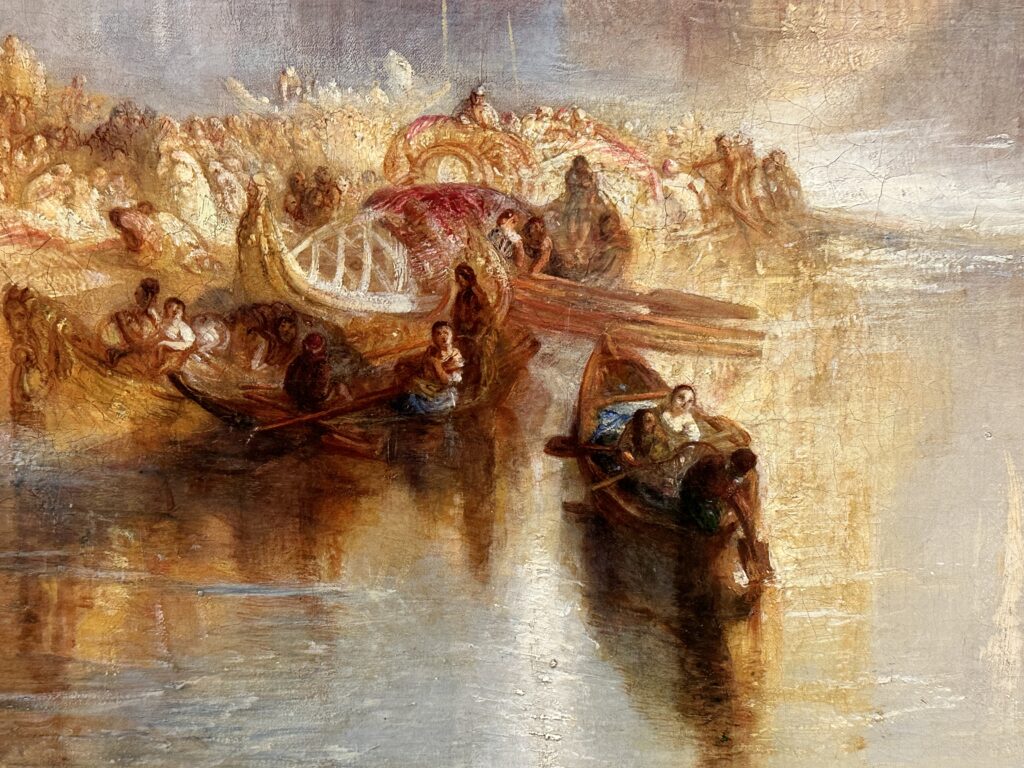

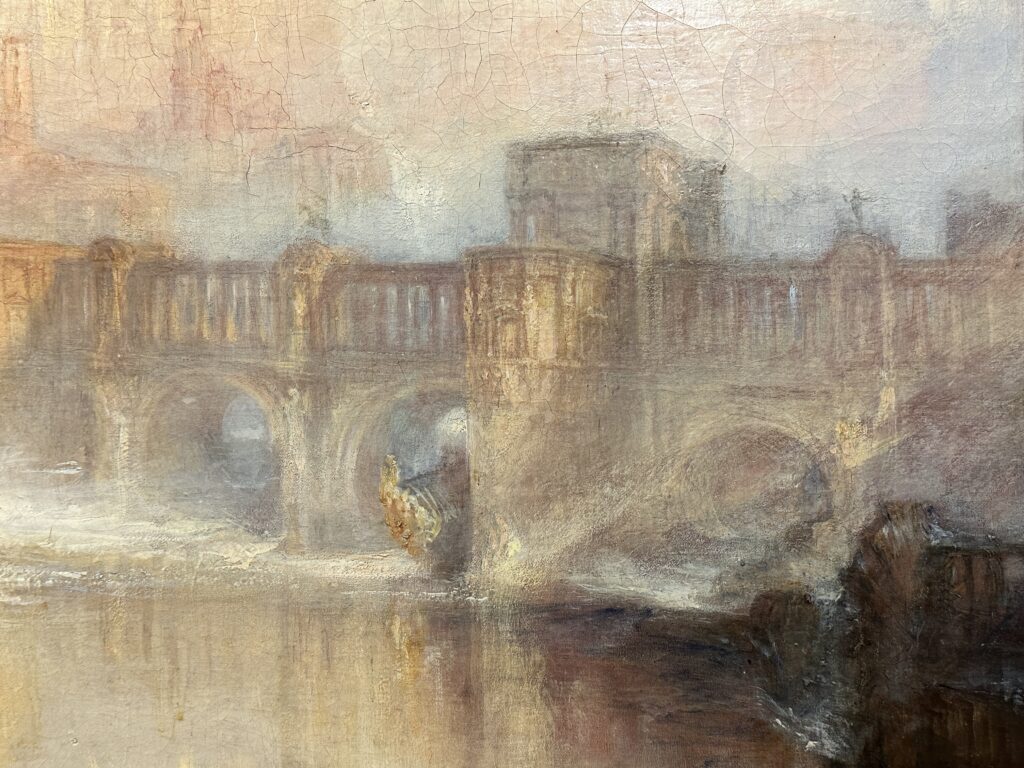
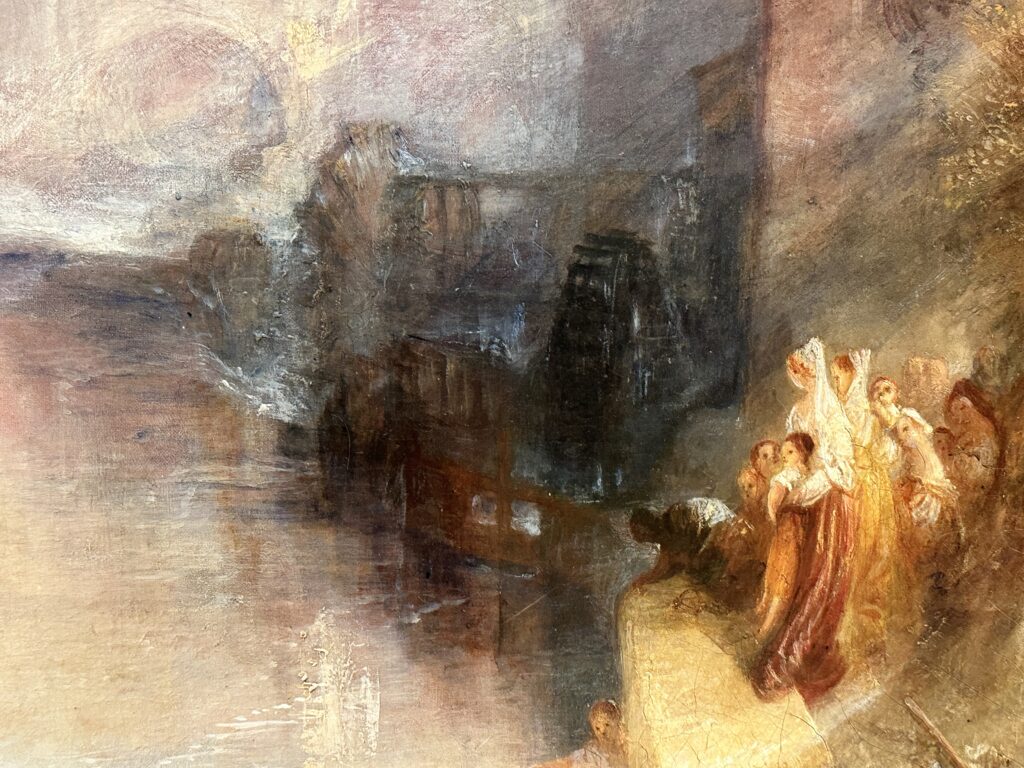

JMW Turner 1755-1851
Rome, from the Vatican. Raffael Accompanied by La Fornarina, Preparing his Pictures for the Decoration of the Loggia.
exhibited 1820
Oil paint on canvas
Turner revelled in the history, architecture and light of Rome. On his return, he painted this sweeping view of the Vatican. Ot was Turner’s tribute to Italian Renaissance painter and architect Raphael, which he exhibited on the 300th anniversary of his death. Raphael stands in the foreground with his companion La Fornarina. He gazes at the overhead vaults of the Loggia, painted by Turner and his students. The drawings and paintings in the centre foreground represent the breath of Raphael’s talent.
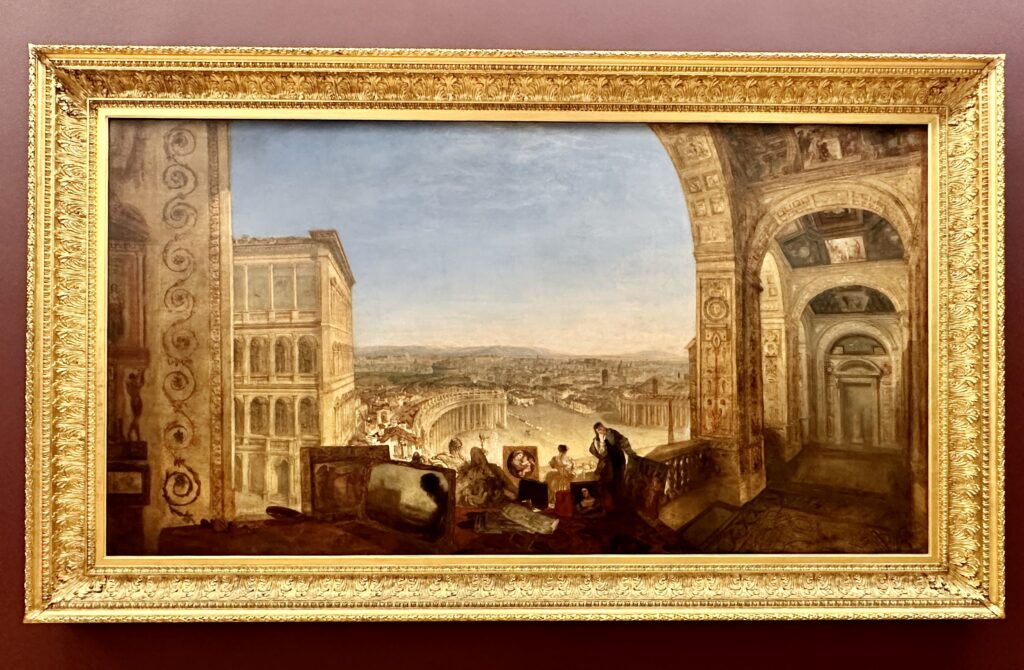
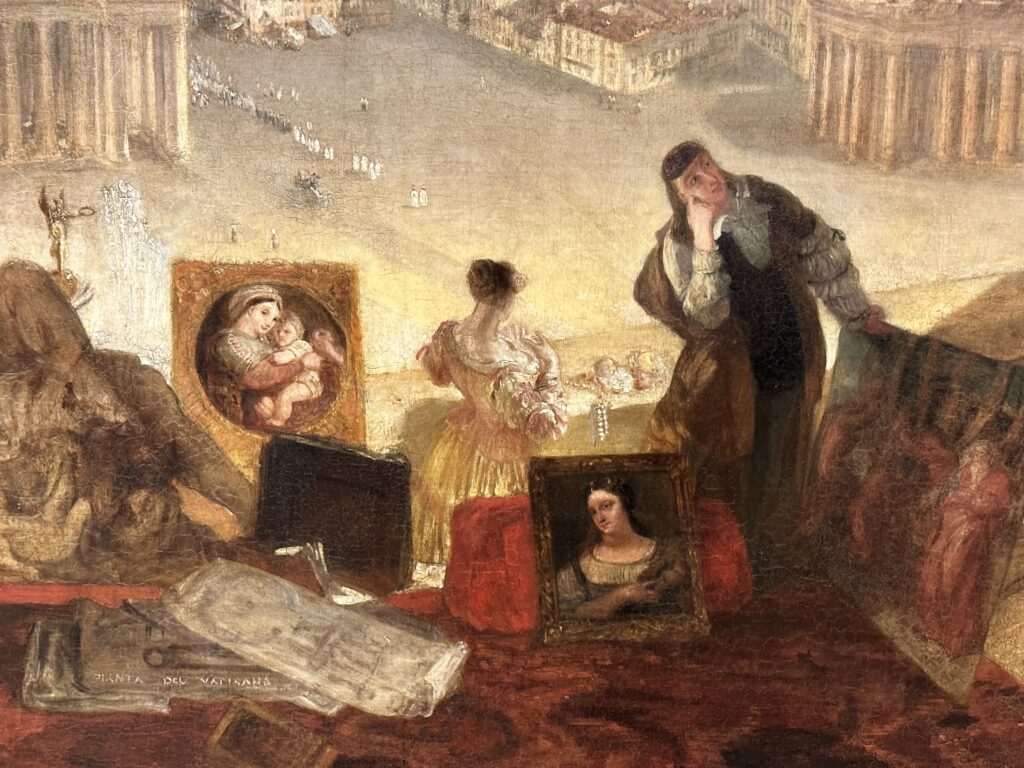

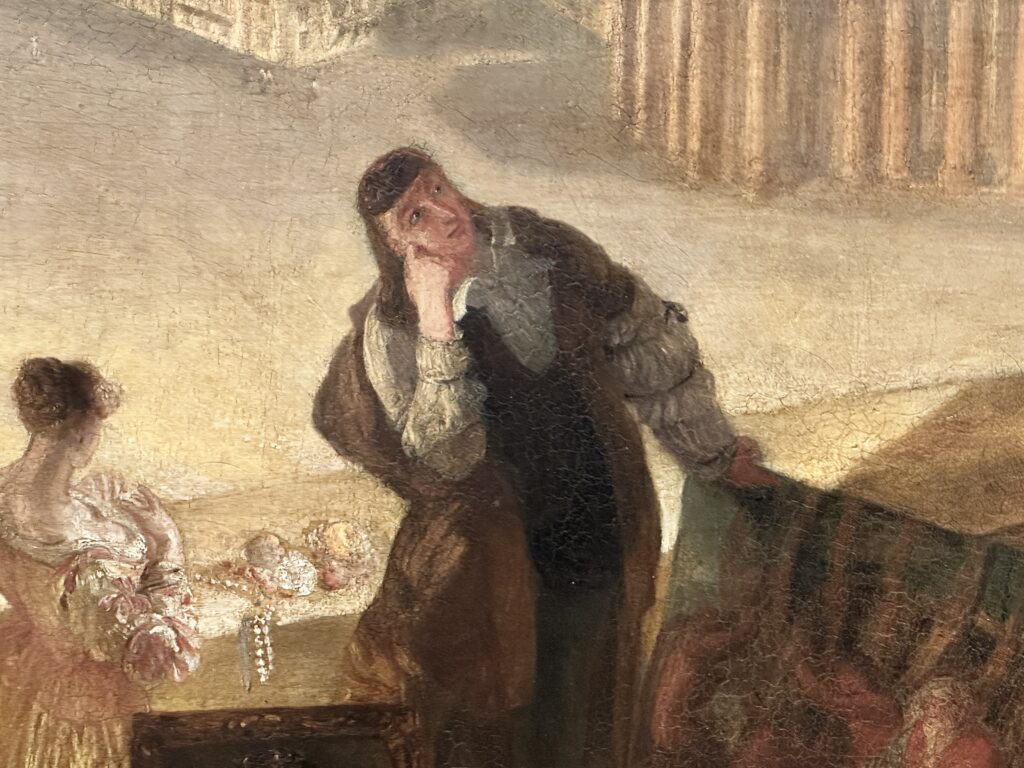
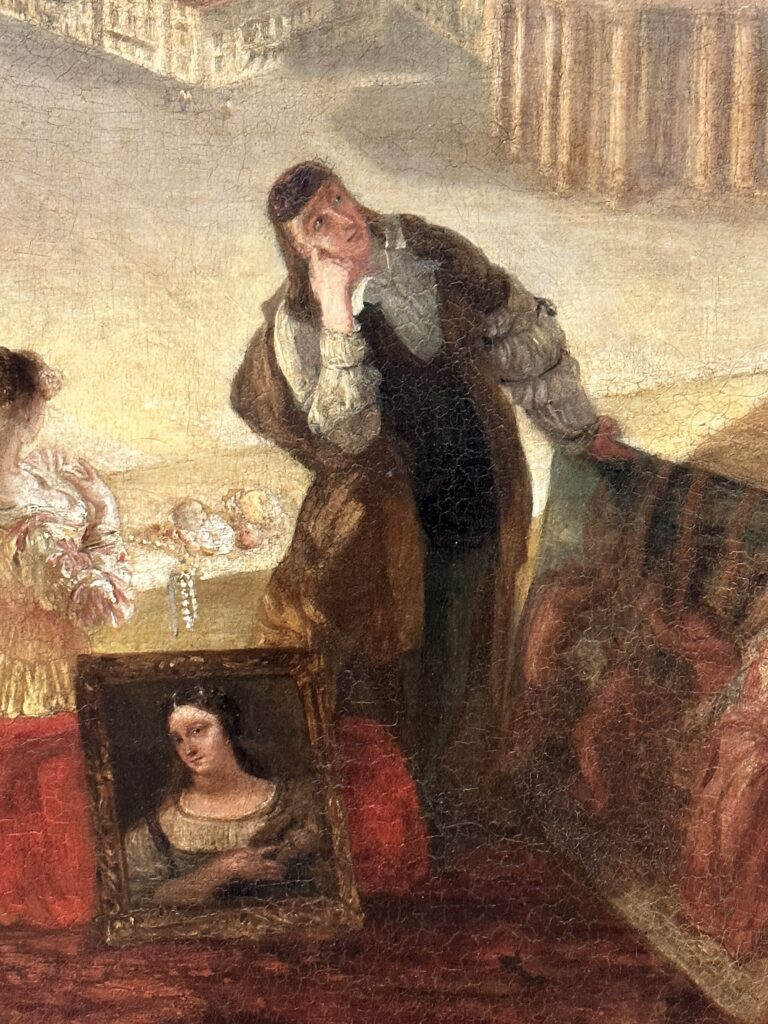

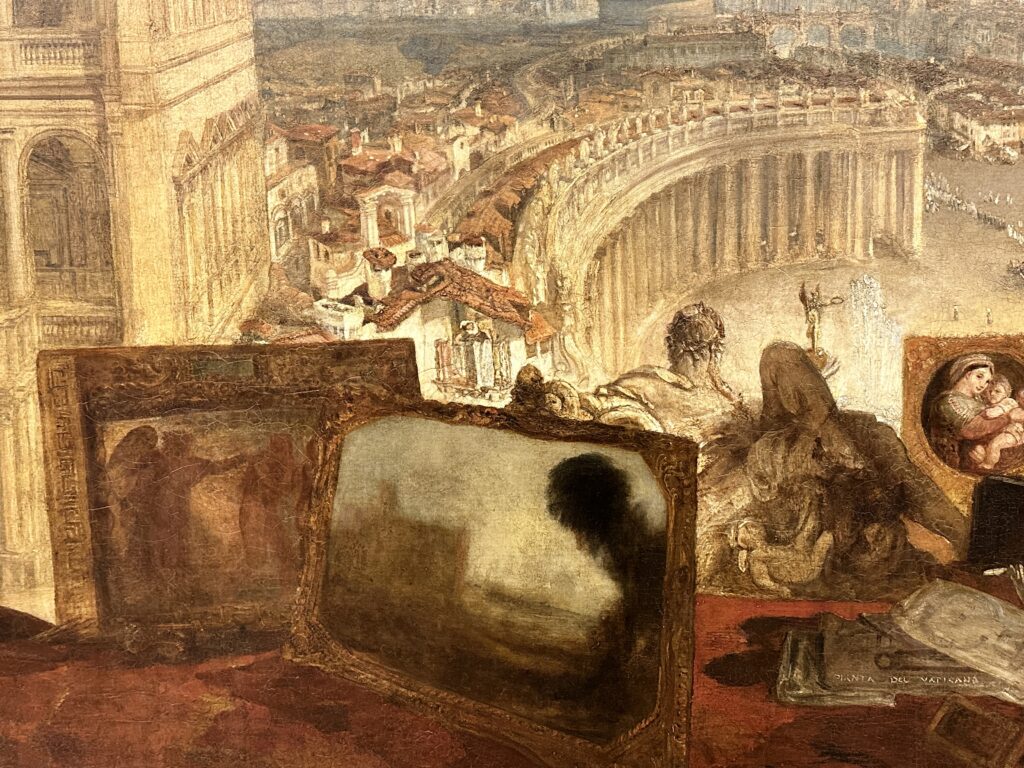
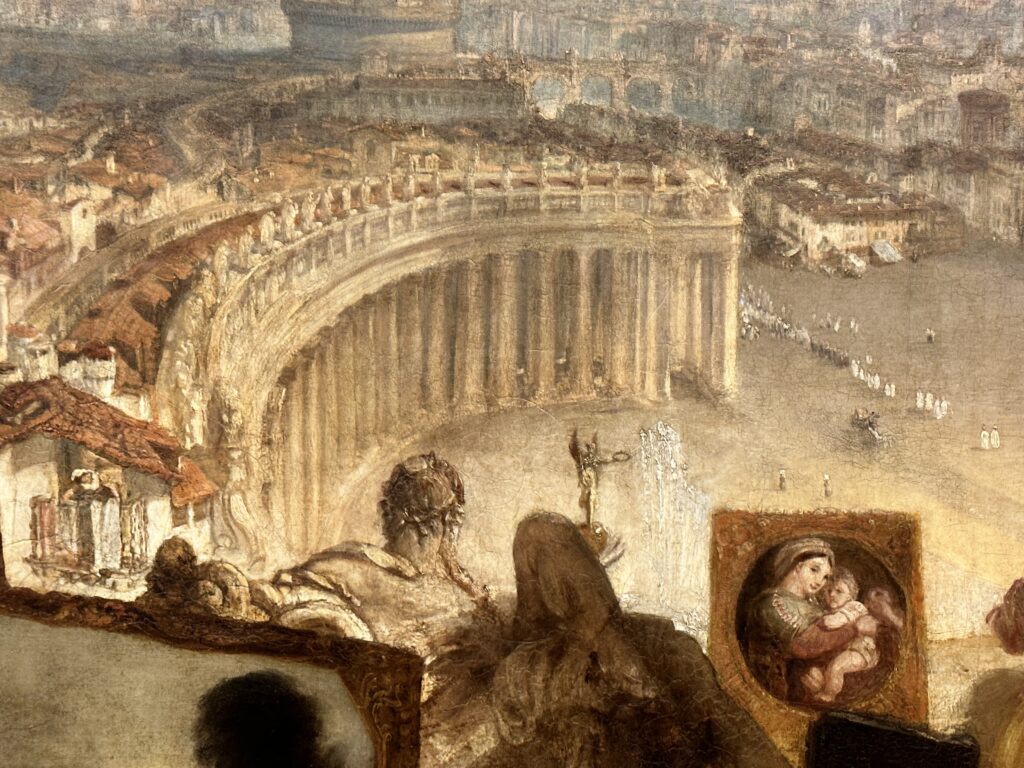
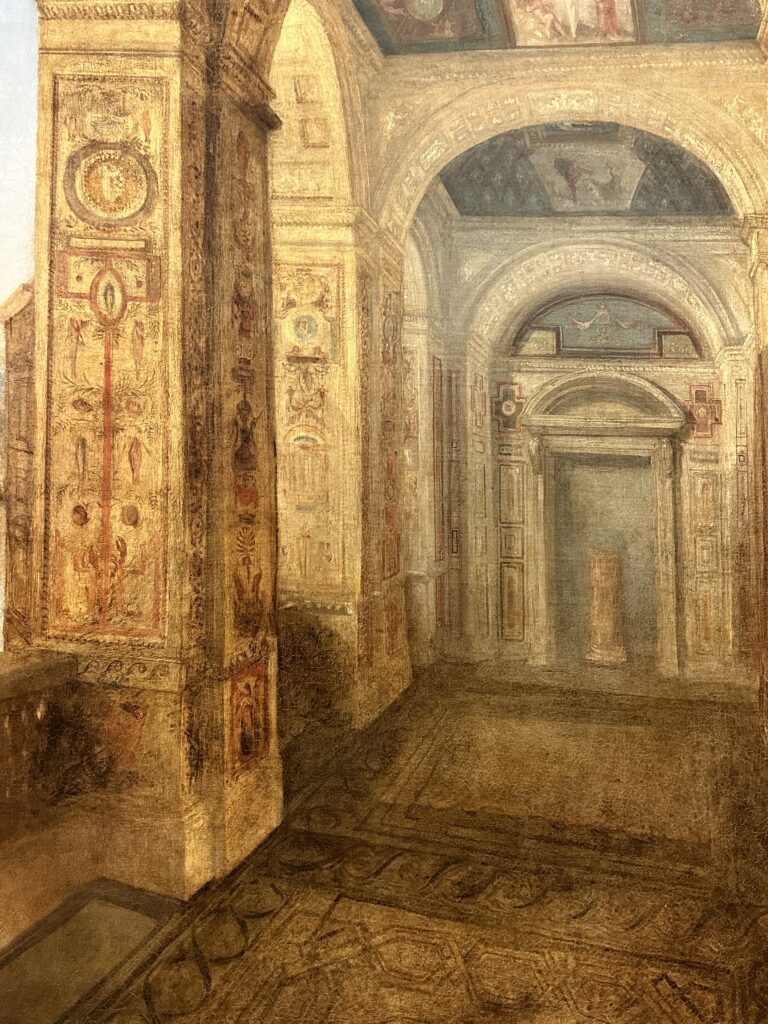

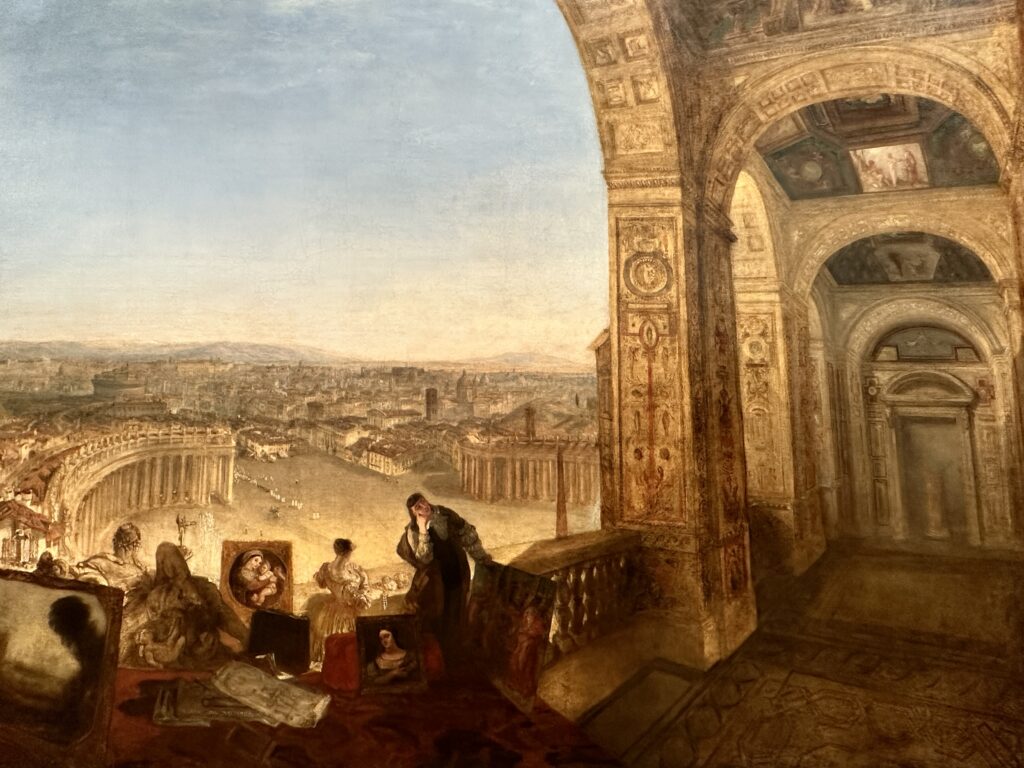

Erika Brown Tour Guide in London, UK

